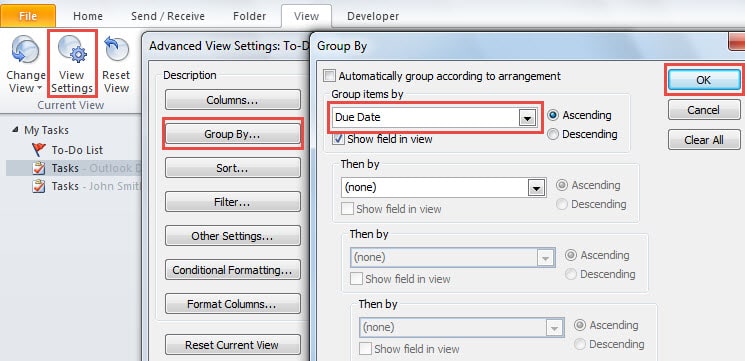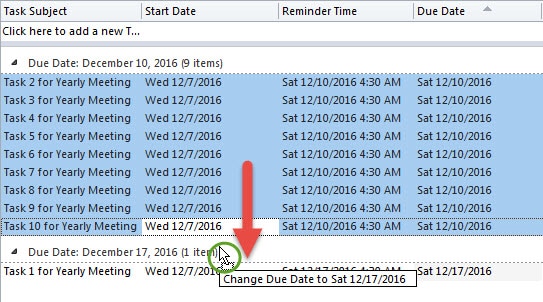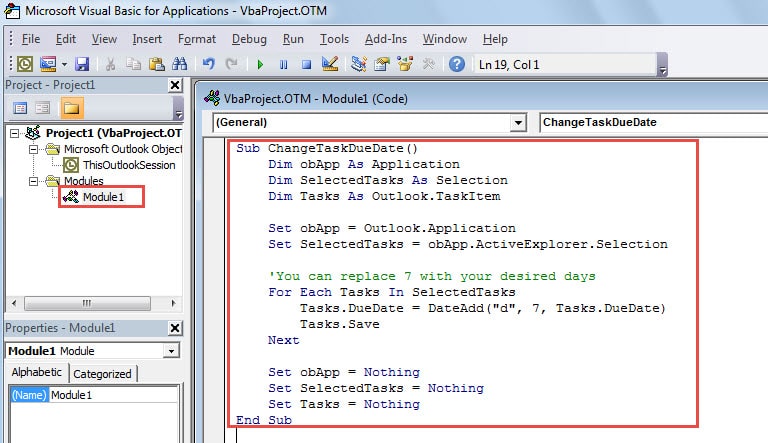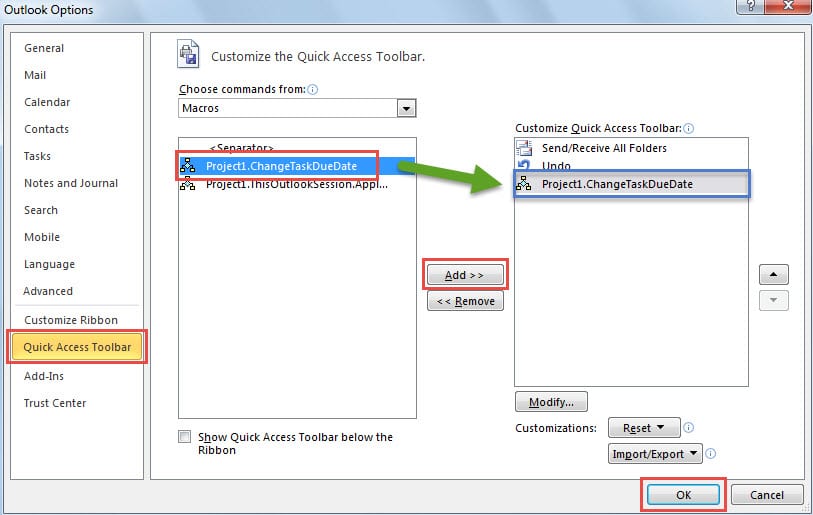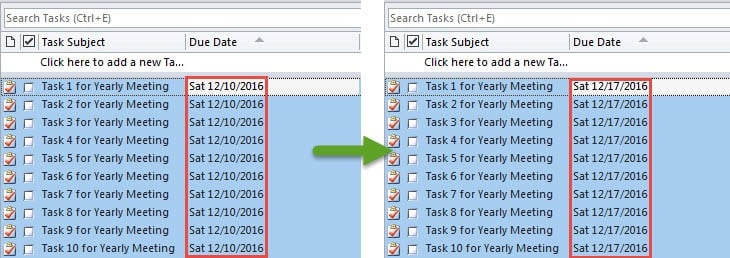When we find that some tasks’ due dates are too close, we will hope to defer them to a later date, like one week later. Changing one by one will be quite time-consuming. This article will introduce 2 quick methods.
As usual, before a great event, such as an important yearly meeting, I have to do much preparatory work. So as to better schedule my work, I create several tasks in Outlook. However, for some reasons, I can’t finish the tasks on schedule. So I intend to delay the tasks to a specific date – one week later. Here are 2 techniques which help me change them in quick time.
Method 1: Change Tasks’ Due Dates via Drag & Drop
- At first, double click on one task to open it and change its due date to the specific date.
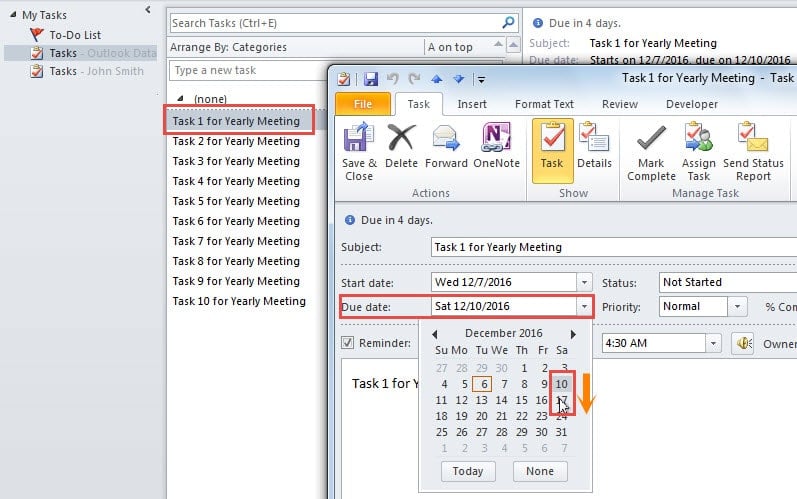
- After that, go to “View” tab and click on “View Settings” button.
- In the popup dialog box, hit “Group By” button.
- Then in the subsequent dialog box, choose “Due Date” from the “Group items by” drop down list.
- Next click a series of “OK” to close all the dialog boxes.
- Later select the tasks whose due dates haven’t been changed. And then drag and drop them to the group in which tasks’ due dates are as expected.
- Finally all the tasks’ due dates must have been changed.
Method 2: Change Tasks’ Due Dates via VBA Codes
- In the first place, press “Alt + F11” to open “Visual Basic” window.
- Then copy and paste the following VBA codes in a new module:
Sub ChangeTaskDueDate()
Dim obApp As Application
Dim SelectedTasks As Selection
Dim Tasks As Outlook.TaskItem
Set obApp = Outlook.Application
Set SelectedTasks = obApp.ActiveExplorer.Selection
'You can replace 7 with your desired days
For Each Tasks In SelectedTasks
Tasks.DueDate = DateAdd("d", 7, Tasks.DueDate)
Tasks.Save
Next
Set obApp = Nothing
Set SelectedTasks = Nothing
Set Tasks = Nothing
End Sub
- Save the codes and exit “Visual Basic” window.
- Next click on the down arrow in the Quick Access Toolbar and choose “More Commands”.
- In the new window, you should follow the steps below:
- At first, select “Macros” from “Choose commands from” drop down list.
- Then pitch on the previously created macro – “ChangeTaskDueDate”.
- Subsequently, click the “Add” button in center.
- After that, click “OK” button.
- Later you will back to Outlook Tasks pane. Now you can select all the tasks whose due dates you intend to change.
- After that, click on the “CreateTaskDueDate” button in Quick Access Toolbar. At once, all the selected tasks’ due dates will be changed in batches.
Comparison of the 2 Methods
| Methods | Advantages | Disadvantages |
| Change via Drag & Drop | It is ease of operation. | You still have to change one task’s due date manually. |
| Change via VBA Codes | You needn’t change any tasks’ due date manually. | You should change macro settings in “Trust Center”. |
Beware of All Potential Dangers around Outlook
As we all know, Outlook is vulnerable. Therefore, we should protect Outlook from all the potential threats, including power outages, virus infection and malware attacks. For example, once contracted by virus, Outlook data will be put at risk of corruption. In that case, you have no choice but to take aid of third party repair tool to rescue your corrupt Outlook PST data.
Author Introduction:
Shirley Zhang is a data recovery expert in DataNumen, Inc., which is the world leader in data recovery technologies, including repair SQL file damage and outlook repair software products. For more information visit www.datanumen.com
